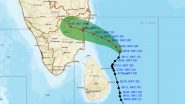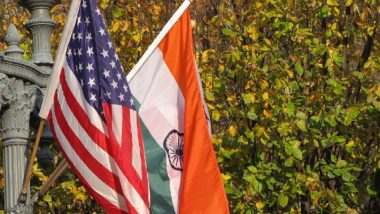New Delhi, March 7: Withdrawal of special duty benefits by the United States has got the Indian government into a high level internal consultation process on the options it has, including abandoning the proposed trade package.
"We have been working on an extensive trade package with the US and the Generalised System of Preferences (GSP) is an integral part of it. Without GSP, the trade package is irrelevant," said a senior government official. Donald Trump Decides to Withdraw India from GSP Program List.
However, with 60 days in hand before the withdrawal comes into play, the Indian government plans to study the options it has and consider the impact on its trade with the US. It is holding discussions with key stakeholders including industrialists and exporters.
India may take up the GSP issue with the US, design a trade package minus the GSP, may provide some support to the impacted industries, work out within or outside the World Trade Organization (WTO) norms or abandon the India-US trade package.
"The agenda also includes deciding on whether to retaliate with high import duty on 29 items from the US from April 1. We will take a call on all these in the next 6-7 days," said the official.
While India was getting tariff preference on 5,111 tariff lines out of 18,770 in the US, it was utilising GSP for about 1,900 tariff lines. This is a dynamic list with many products going out of GSP over the years including 50-odd items that were removed in 2018.
"Of the 1,900 tariff lines, around 500 tariff lines get tariff advantage of more than 3 per cent for which the government must plan some support to maintain their cost advantage," said Ajay Sahai, Director General of the Federation of Indian Export Organisations (FIEO).
"Hand-holding may not be required in all 500 tariff lines mainly where the margin is pretty high. For other products, where tariff advantage due to GSP is only up to 3 per cent, the industry is likely to absorb the duty loss and continue its export to the US," Sahai told IANS.
Preferential tariffs under GSP ranges from 1 to 6 per cent and the total benefit under the scheme for India, which began in 1976 as support from developed to developing countries, was about $190 million in 2017 for $5.6 billion exports to the US under GSP.
Though $190 million is 0.4 per cent of India's total exports of $50.57 billion (2017) to the US, the government understands that the withdrawal of GSP can impact the entire $5.6 billion exports under the GSP as they are likely to lose their cost competitiveness.
"The GSP withdrawal can surely impact the entire $5.6 billion worth exports, or 10 per cent of our total exports to the US. But we sincerely believe that not all of these exports will stop. We are hopeful that many of these exports will continue," the government official said.
The Indian government maintains that all products exported to the US under GSP satisfy the Competitive Need Limitations (CNL) criteria, which decides whether a product originating from a beneficiary developing country can continue to enjoy the GSP benefits.
As per the criteria, a product exceeds the CNLs if the beneficiary country account for 50 per cent or more of the total imports of that product into the US or if it exceeds a dollar-value limit which was $180 million in 2017. The dollar-value limit is increased by $5 million annually.
(The above story first appeared on LatestLY on Mar 07, 2019 04:45 PM IST. For more news and updates on politics, world, sports, entertainment and lifestyle, log on to our website latestly.com).













 Quickly
Quickly




















